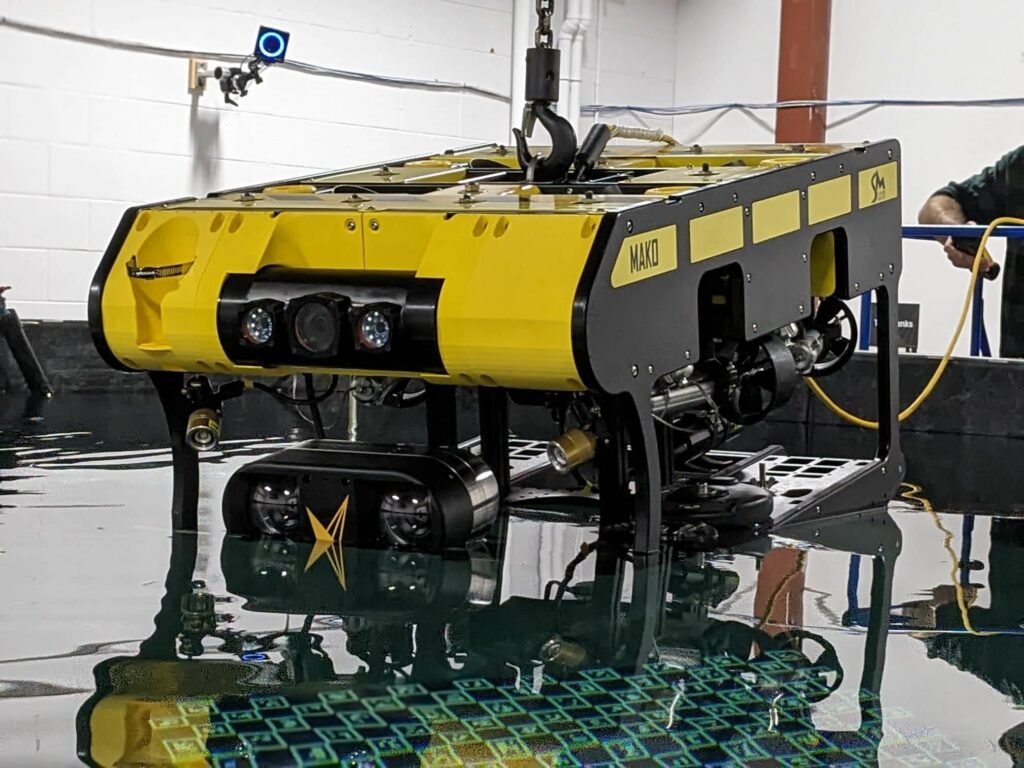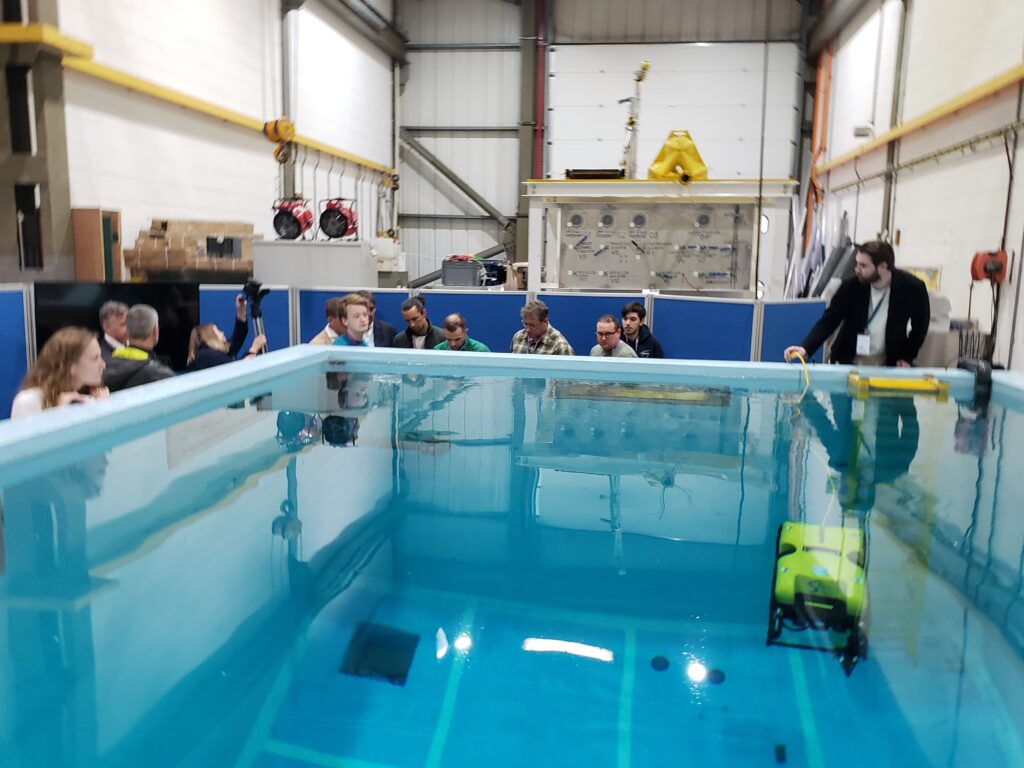When determining your ROV power requirements, it’s important to consider factors such as mission type, depth of operation, available budget, and the technological advancements in battery and power distribution systems. Collaborating with experts in marine robotics and engineering can help you make informed decisions to optimize your ROV’s power system for your specific needs. Our SEAMOR team is always happy to have a chat and answer any questions you might have. Get in touch via phone, email, or via one of our social media accounts like LinkedIn.
Calculating ROV power requirements involves estimating the power consumption of ALL components and systems, and then determining an appropriate power source and distribution system.
Here’s a general approach to calculating ROV power requirements
Identify Components
List all the components and systems your ROV carries that require power, including thrusters, lights, cameras, sensors, manipulators, communication systems, and any other electronic equipment. A standard SEAMOR ROV will have several thrusters, lights, and a camera. Beyond that, much of the accessories an ROV has depends on your needs and customisation options. SEAMOR ROVs are highly customisable thanks to, in part, their modular design.
Determine Power Consumption
For each component, determine its power consumption in watts. This information is typically provided by the manufacturer in the component’s specifications. If not, you might need to measure or estimate power usage through testing. We have this information for you and can provide you with the necessary recommendations and tips.
Calculate Total Power
Sum up the power consumption of all components to get the total power required by the ROV. Make sure to account for any power losses due to inefficiencies in the power distribution system. This should be done by your ROV manufacturer. You want these specific ahead of making a purchasing decision. A high-quality ROV, like any of our own 😉 , accounts for different power needs. When possible, SEAMOR ROVs, can easily attach to a tethered power source such as a generator for maximal power use.

Account for Mission Duration
Decide how long you want the ROV to operate on a single battery charge or power source. Multiply the total power consumption by the mission duration to get the energy required. Your manufacturer should have all the numbers. However, keep in mind that experimental numbers do not equal real life missions. To be sure you are choosing a high-quality ROV from a top manufacturer, ask for the in the field numbers under the extreme conditions you need your ROV to operate in. At SEAMOR Marine, we offer demo’s and have many years of experience in all kinds of environments to draw from. Our ROVs are true globe trotters.
Select Power Source
Choose an appropriate power source based on the energy required and the constraints of your ROV. Common power sources include lithium-ion batteries, rechargeable batteries, and tethered power from the surface vessel. Not all types of power sources are available for all missions.
Design Power Distribution
SEAMOR Marine uses a power distribution system that efficiently routes power from the source to all components while minimizing losses. This can involve using voltage regulators, power converters, and appropriate wiring. The system specifics depend on the accessories your ROV carries. Our engineers are happy to chat with you for the full details.
Consider Redundancy
In critical applications, consider incorporating redundancy in the power system to ensure the ROV can continue to operate even if one power source or component fails. We are one of the ROV brands that really push for redundancy, quality, ease of repair, longevity and ease of use even in extreme conditions. We do this with our hyper-modular designs. A lot can be customised to accommodate any potential risky situations your SEAMOR ROV(s) will face during their many work years.
In short; ROV power requirements depend on several factors, including the size and weight of the vehicle, the number and type of thrusters, the payload and equipment onboard (such as cameras, lights, sensors, manipulators), the depth of operation, and the desired mission duration. Does that sound like a lot? Choose SEAMOR Marine for your next ROV and we promise to take that headache away by doing the work for you!

